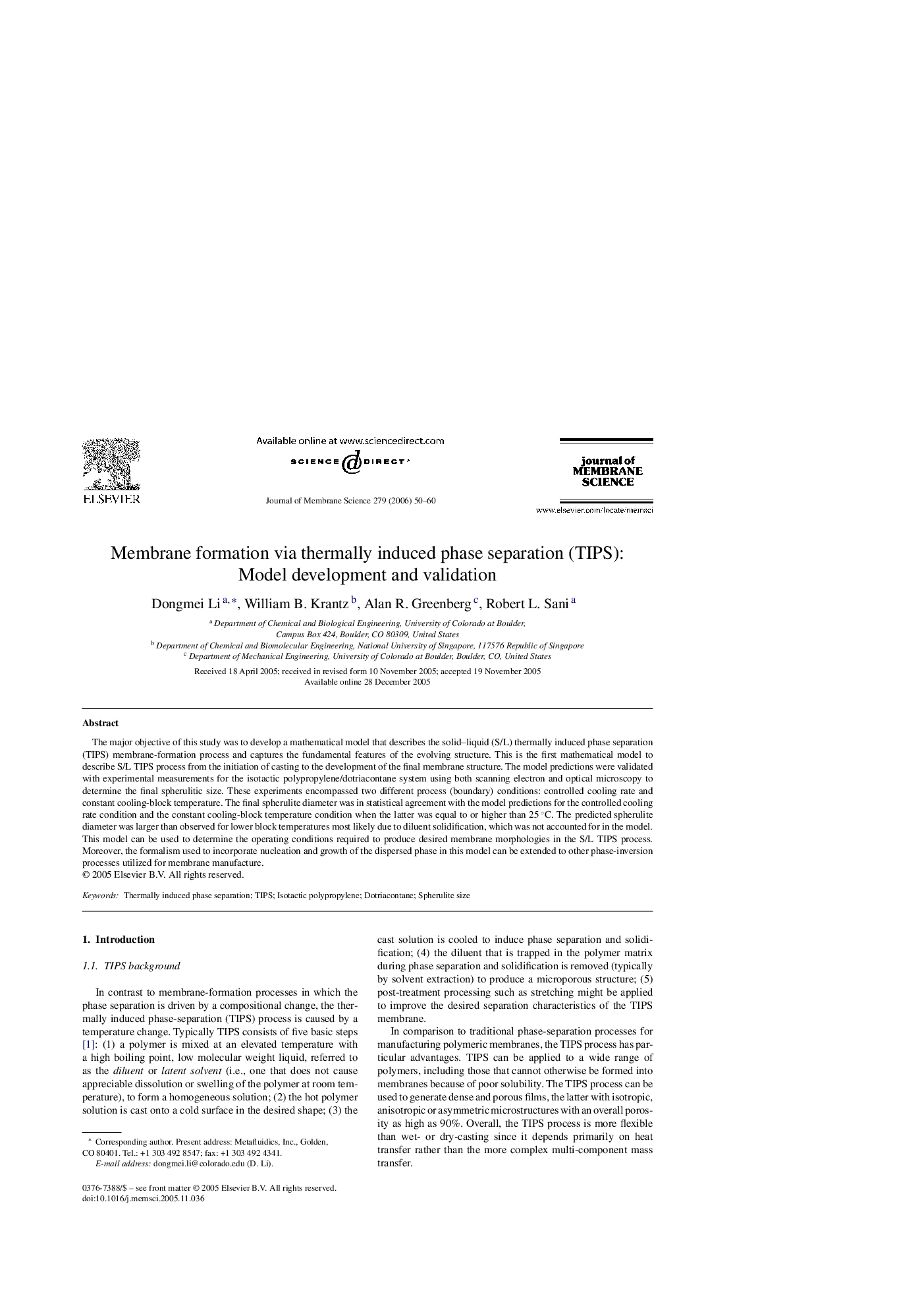| Article ID | Journal | Published Year | Pages | File Type |
|---|---|---|---|---|
| 639371 | Journal of Membrane Science | 2006 | 11 Pages |
Abstract
The major objective of this study was to develop a mathematical model that describes the solid-liquid (S/L) thermally induced phase separation (TIPS) membrane-formation process and captures the fundamental features of the evolving structure. This is the first mathematical model to describe S/L TIPS process from the initiation of casting to the development of the final membrane structure. The model predictions were validated with experimental measurements for the isotactic polypropylene/dotriacontane system using both scanning electron and optical microscopy to determine the final spherulitic size. These experiments encompassed two different process (boundary) conditions: controlled cooling rate and constant cooling-block temperature. The final spherulite diameter was in statistical agreement with the model predictions for the controlled cooling rate condition and the constant cooling-block temperature condition when the latter was equal to or higher than 25 °C. The predicted spherulite diameter was larger than observed for lower block temperatures most likely due to diluent solidification, which was not accounted for in the model. This model can be used to determine the operating conditions required to produce desired membrane morphologies in the S/L TIPS process. Moreover, the formalism used to incorporate nucleation and growth of the dispersed phase in this model can be extended to other phase-inversion processes utilized for membrane manufacture.
Related Topics
Physical Sciences and Engineering
Chemical Engineering
Filtration and Separation
Authors
Dongmei Li, William B. Krantz, Alan R. Greenberg, Robert L. Sani,
